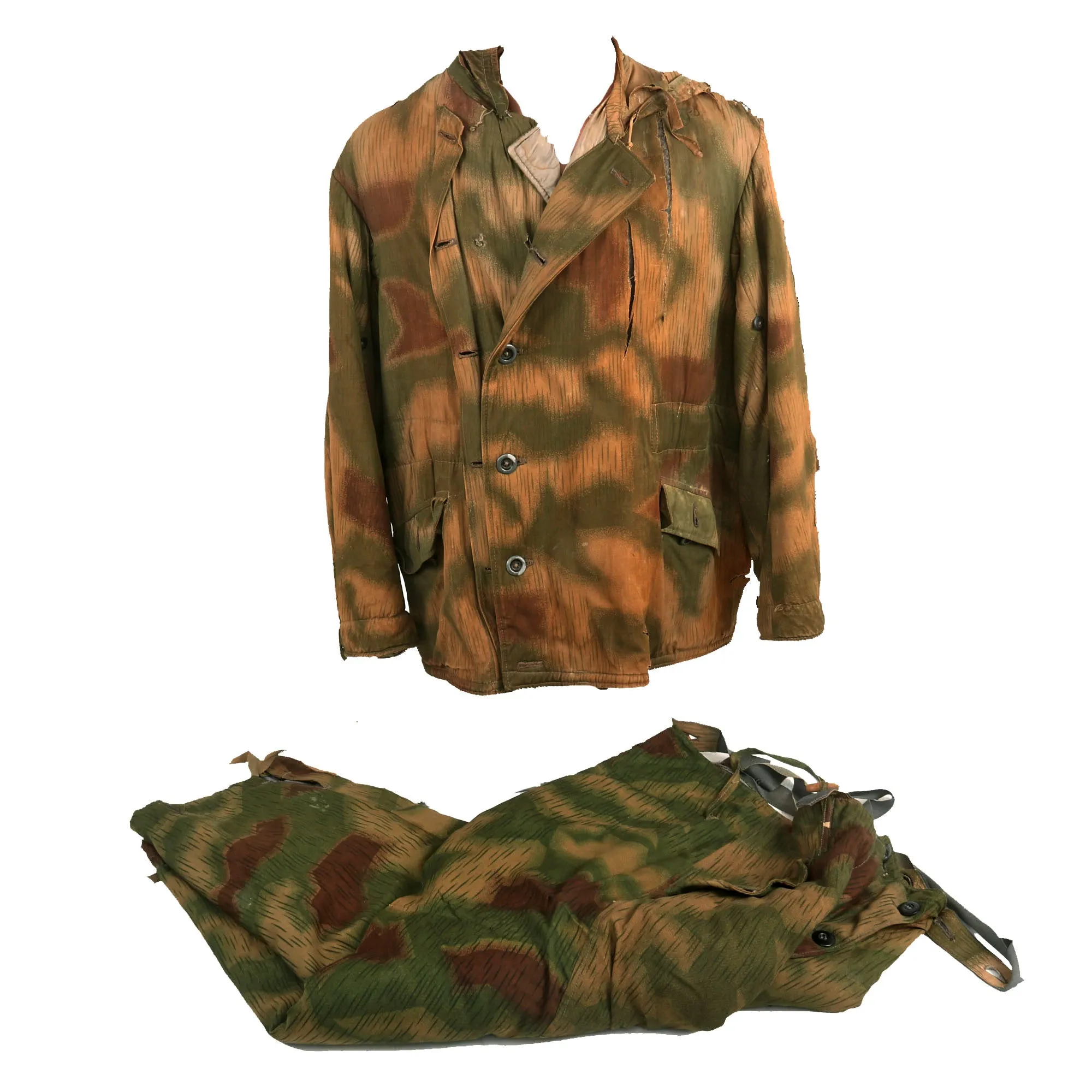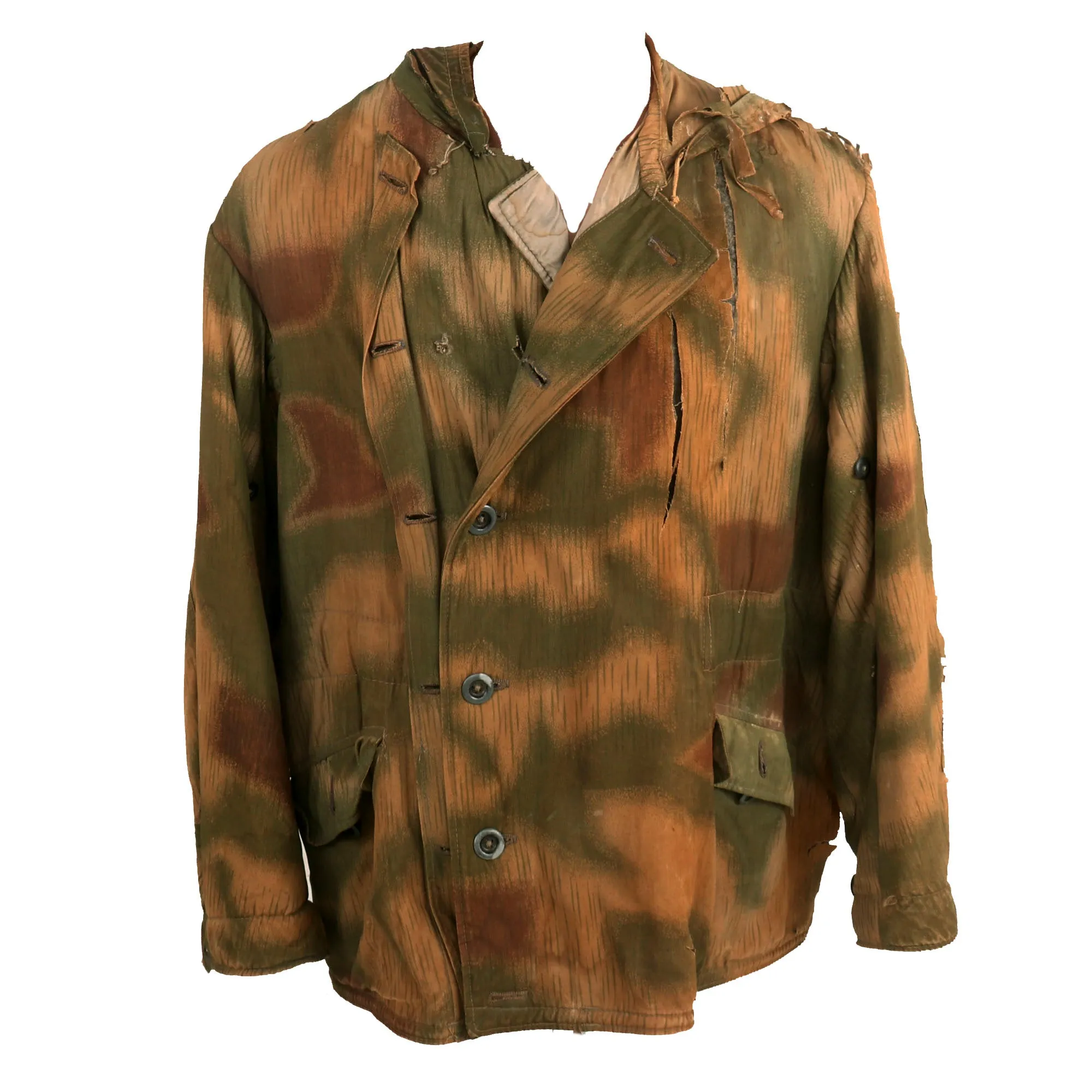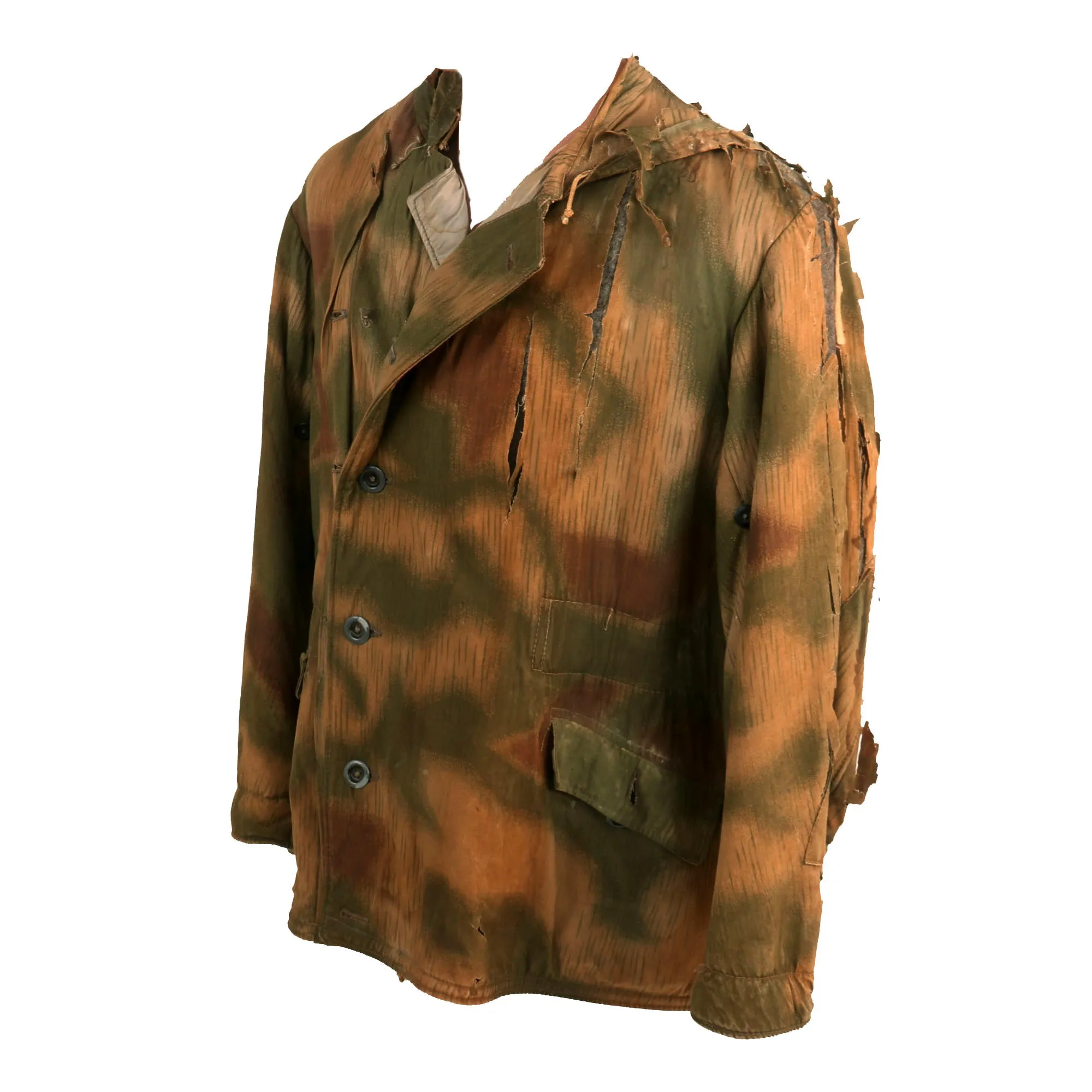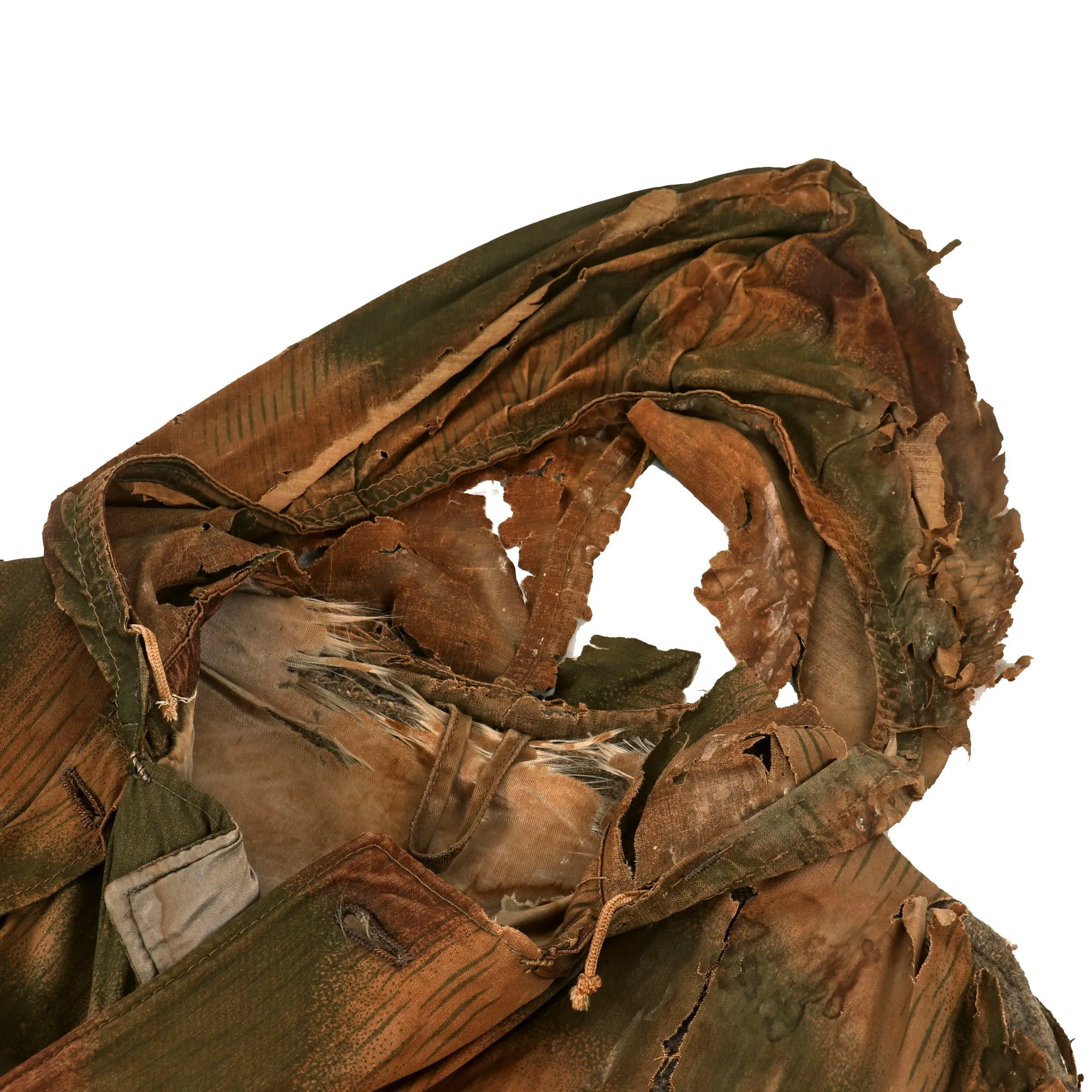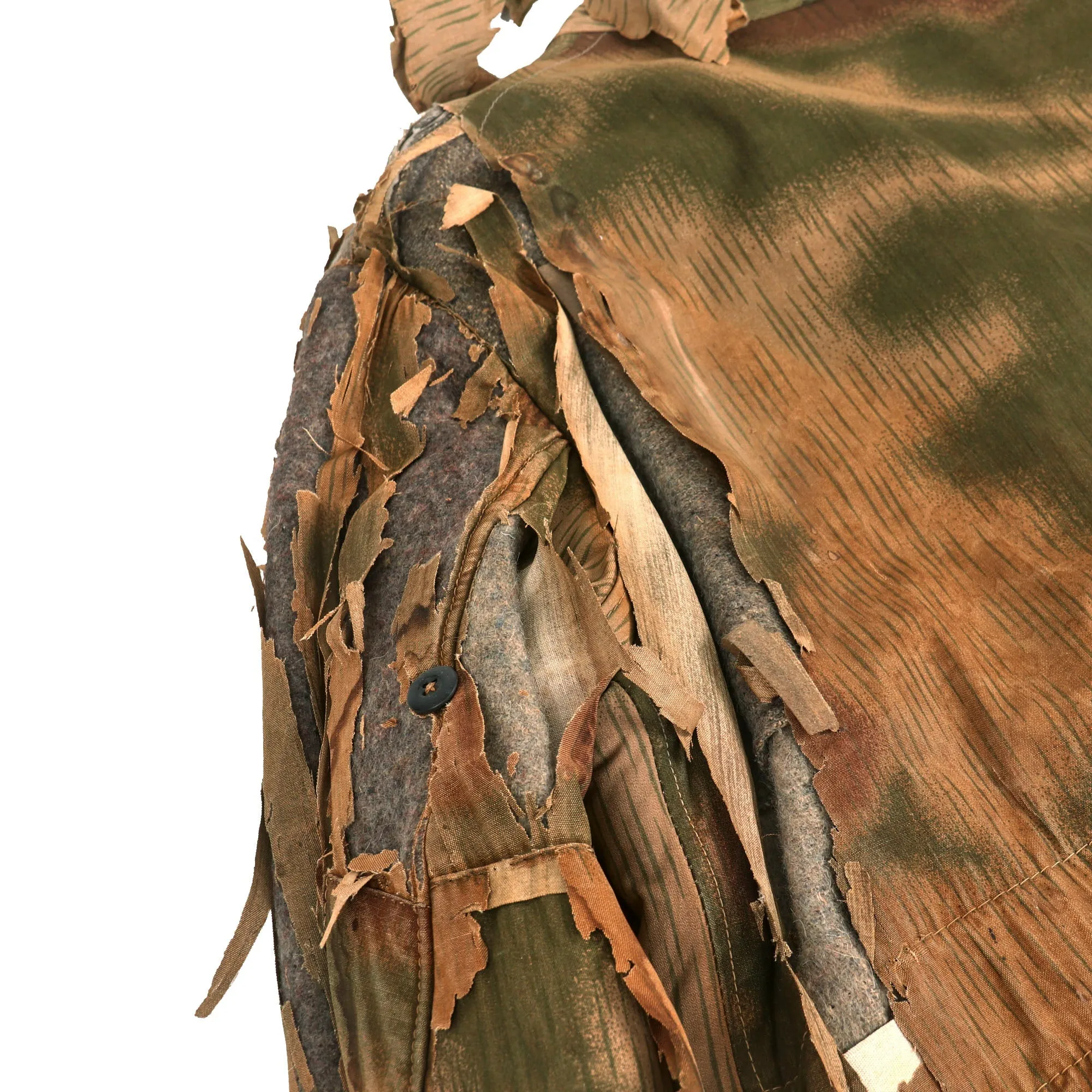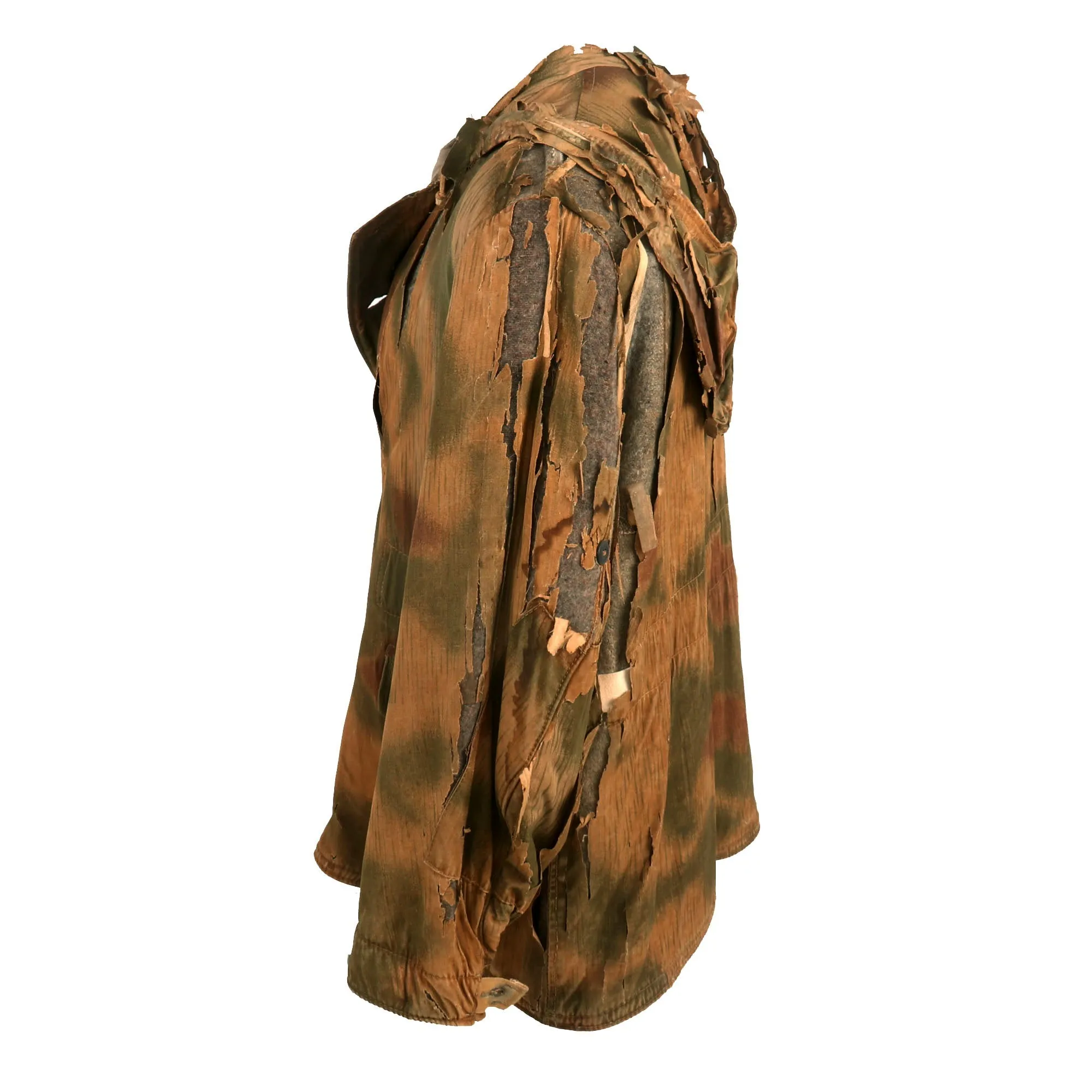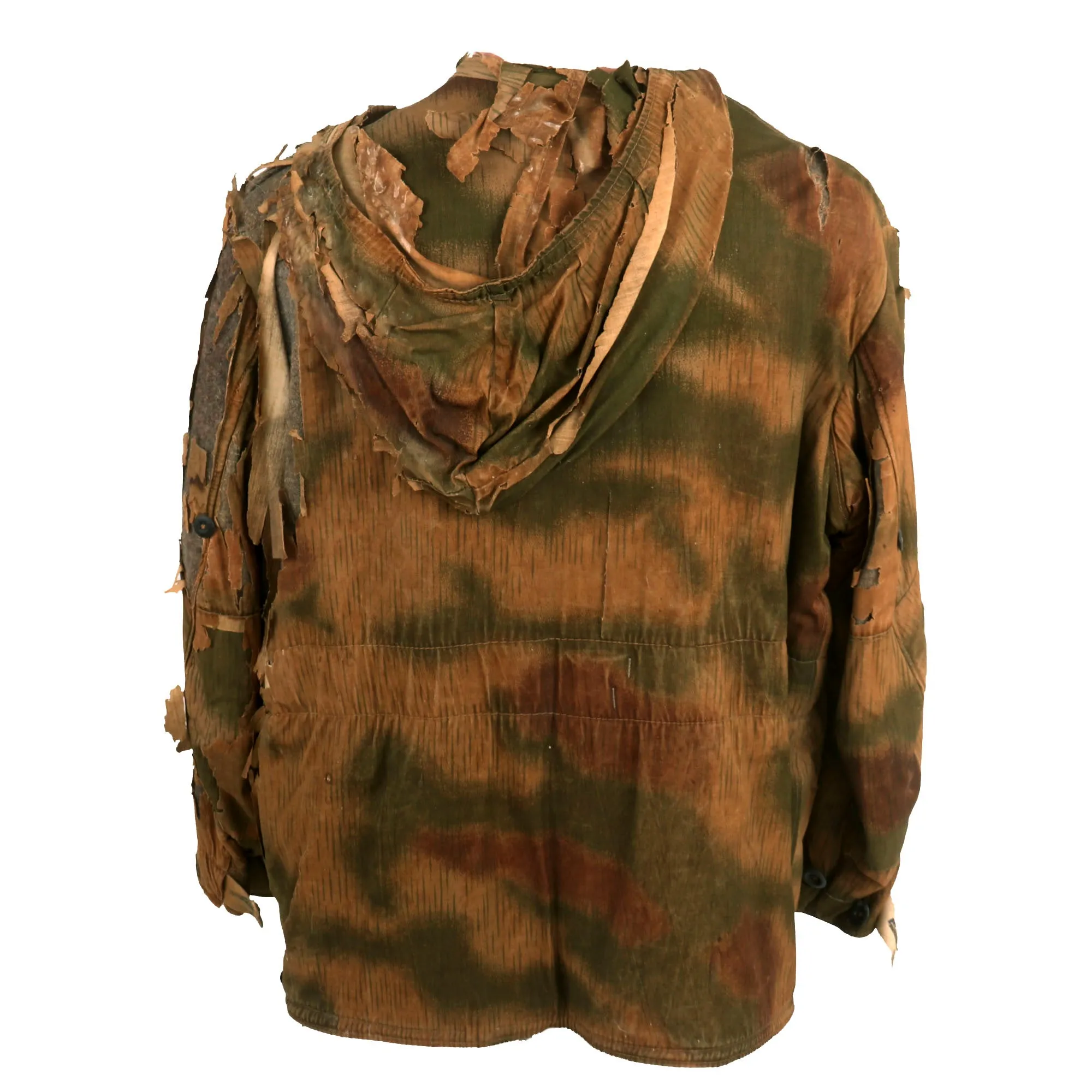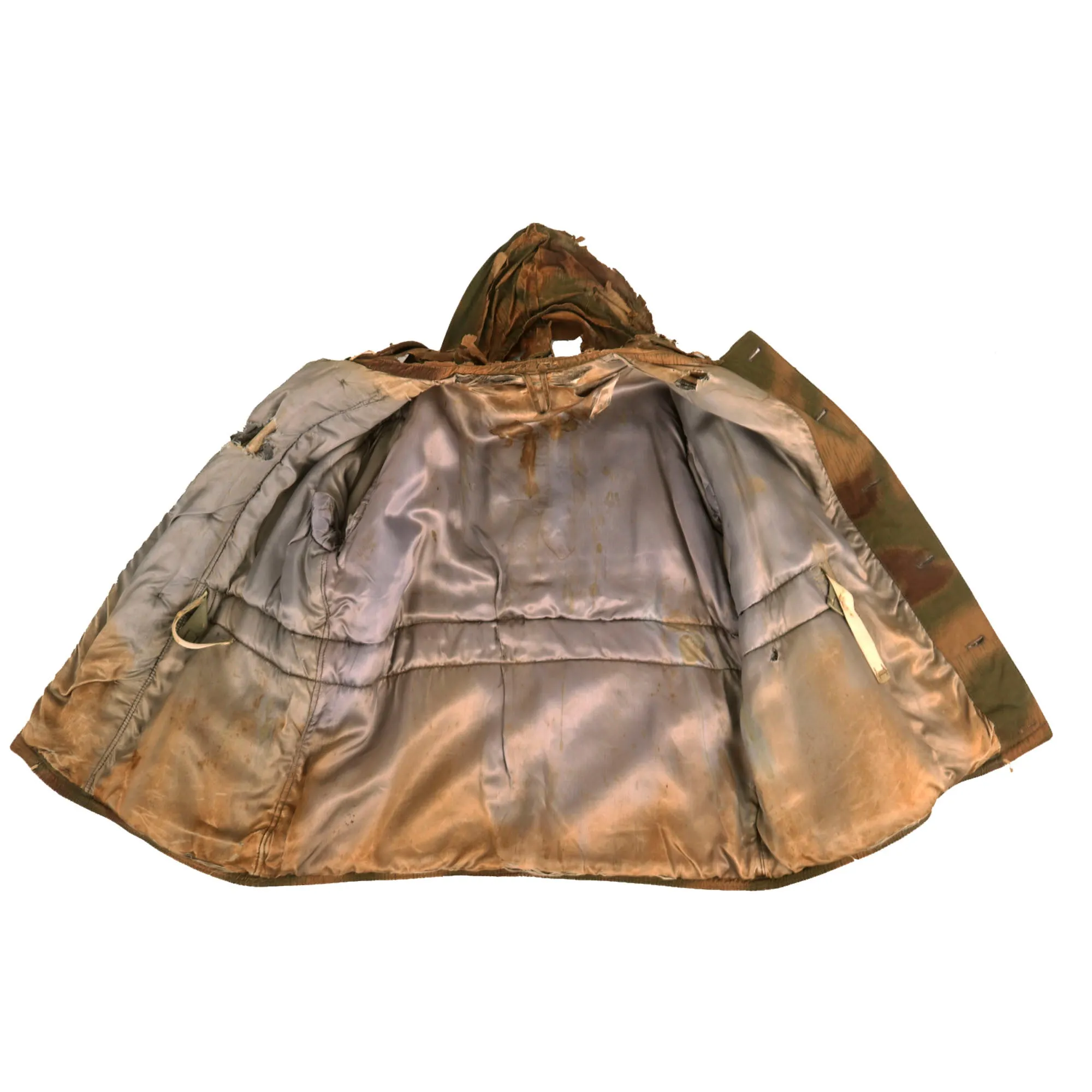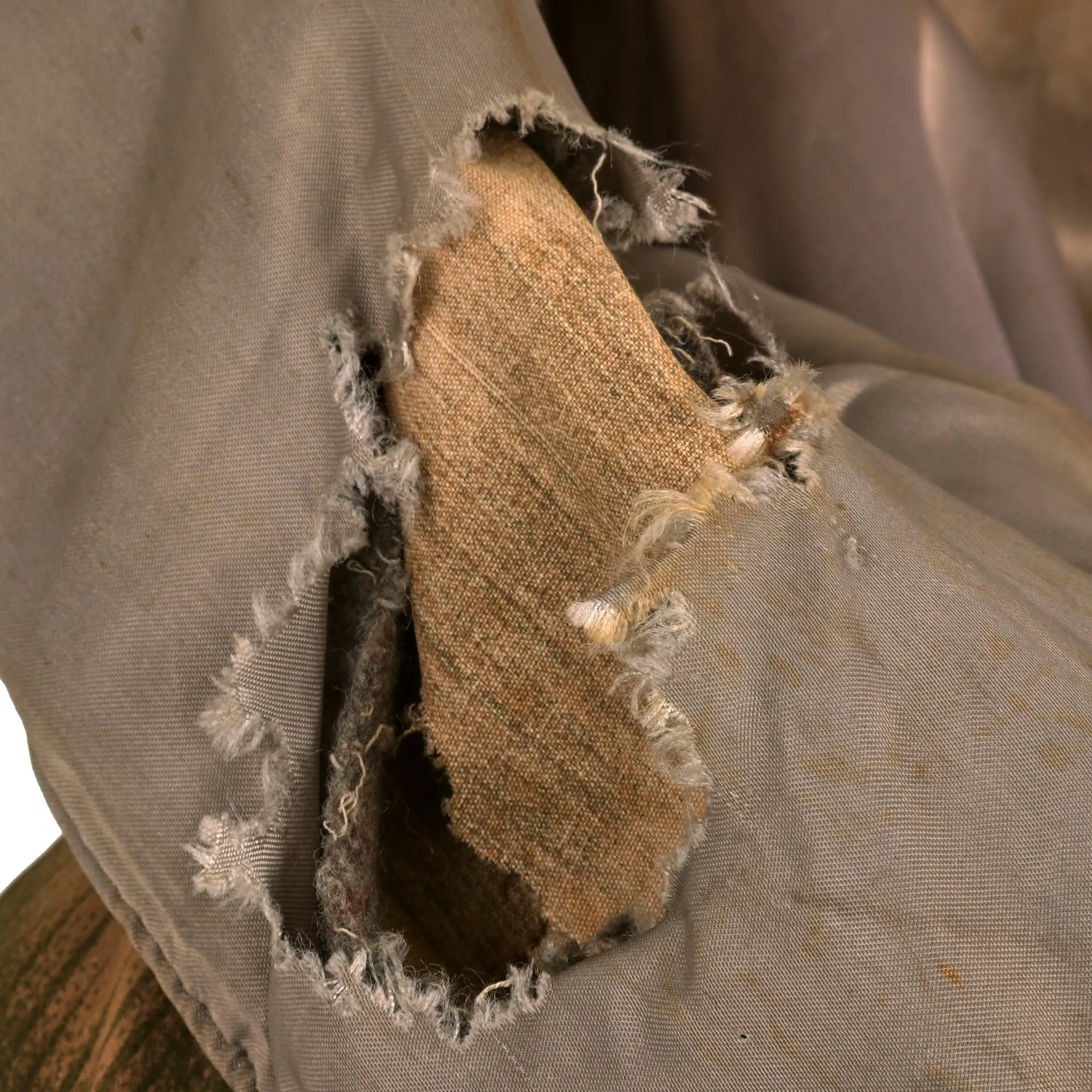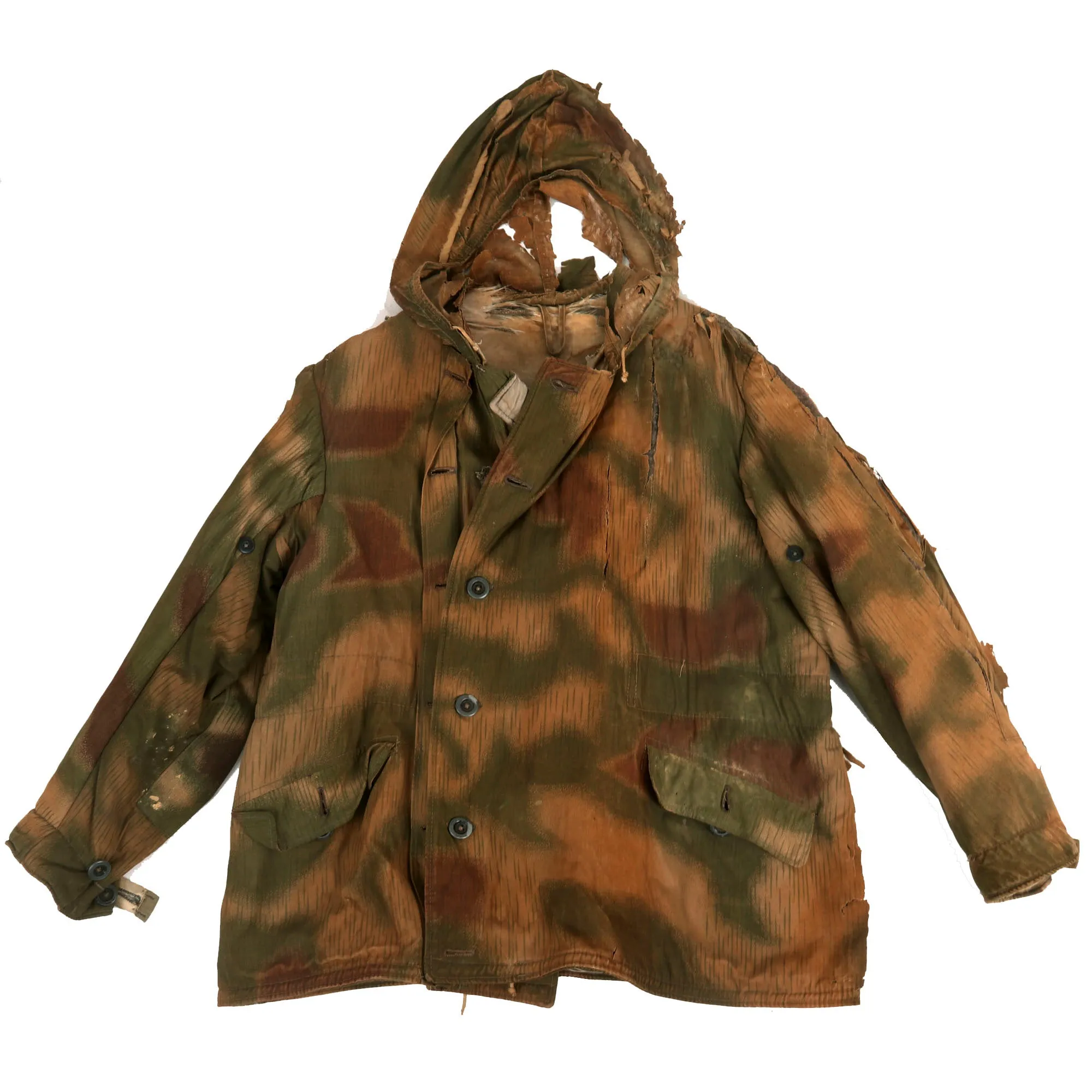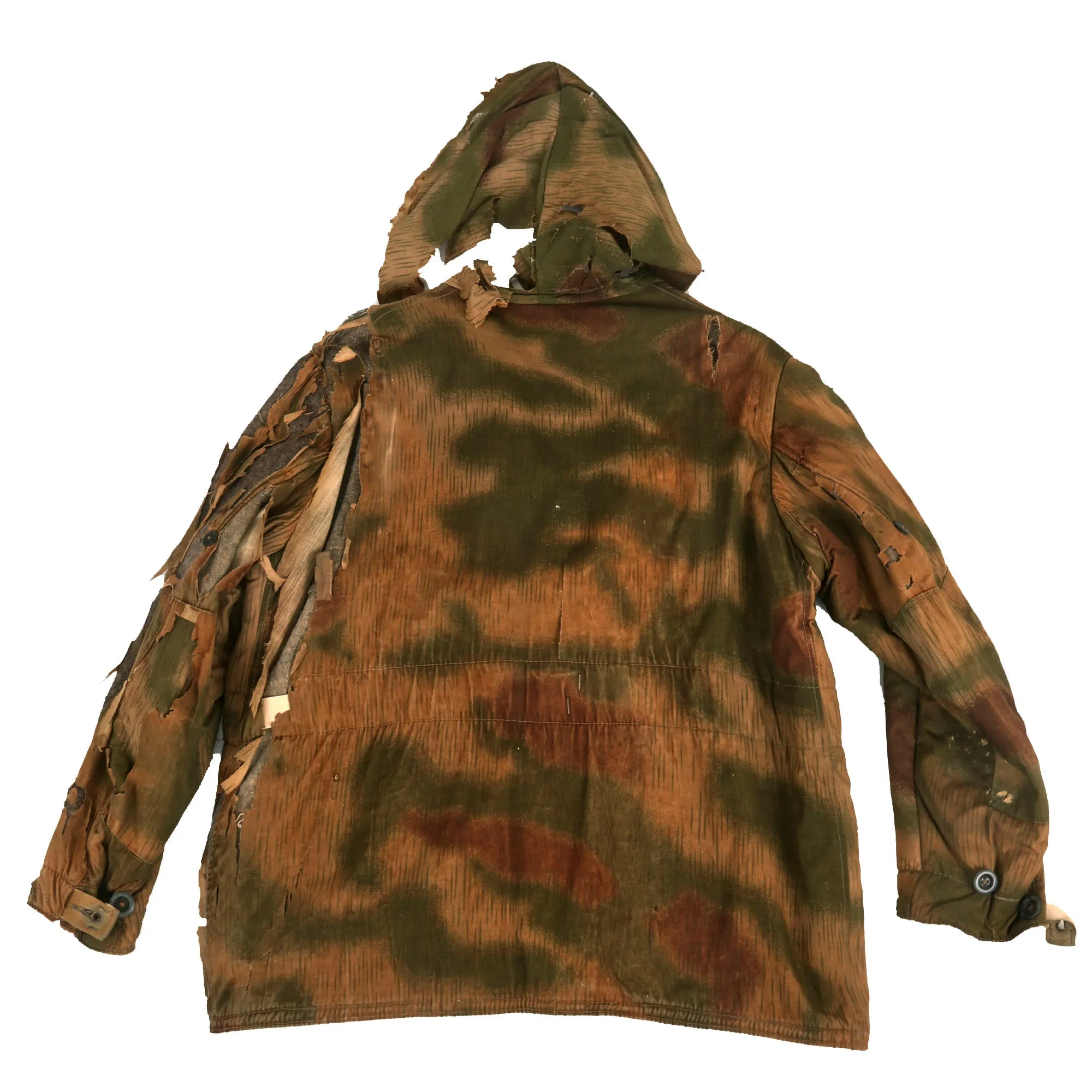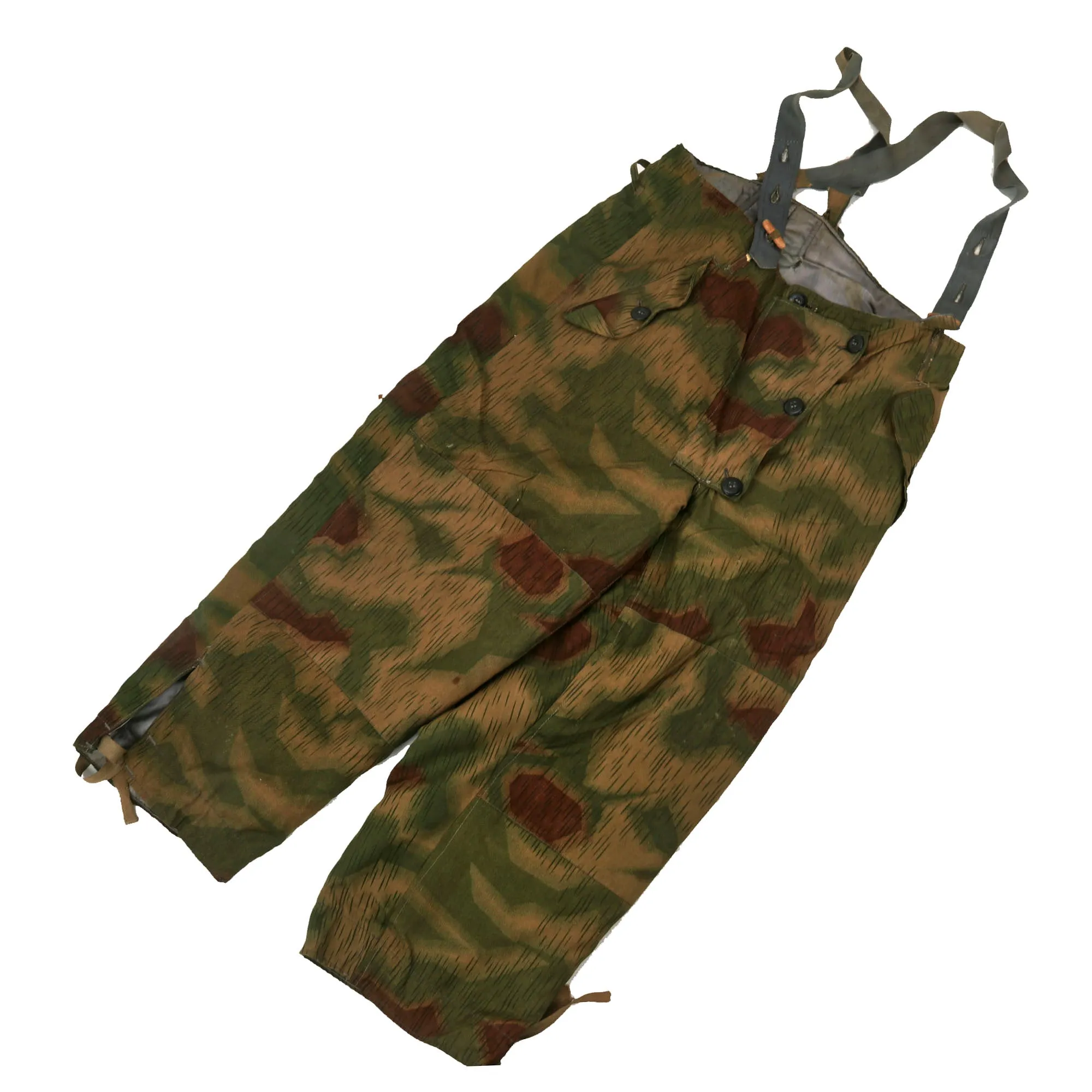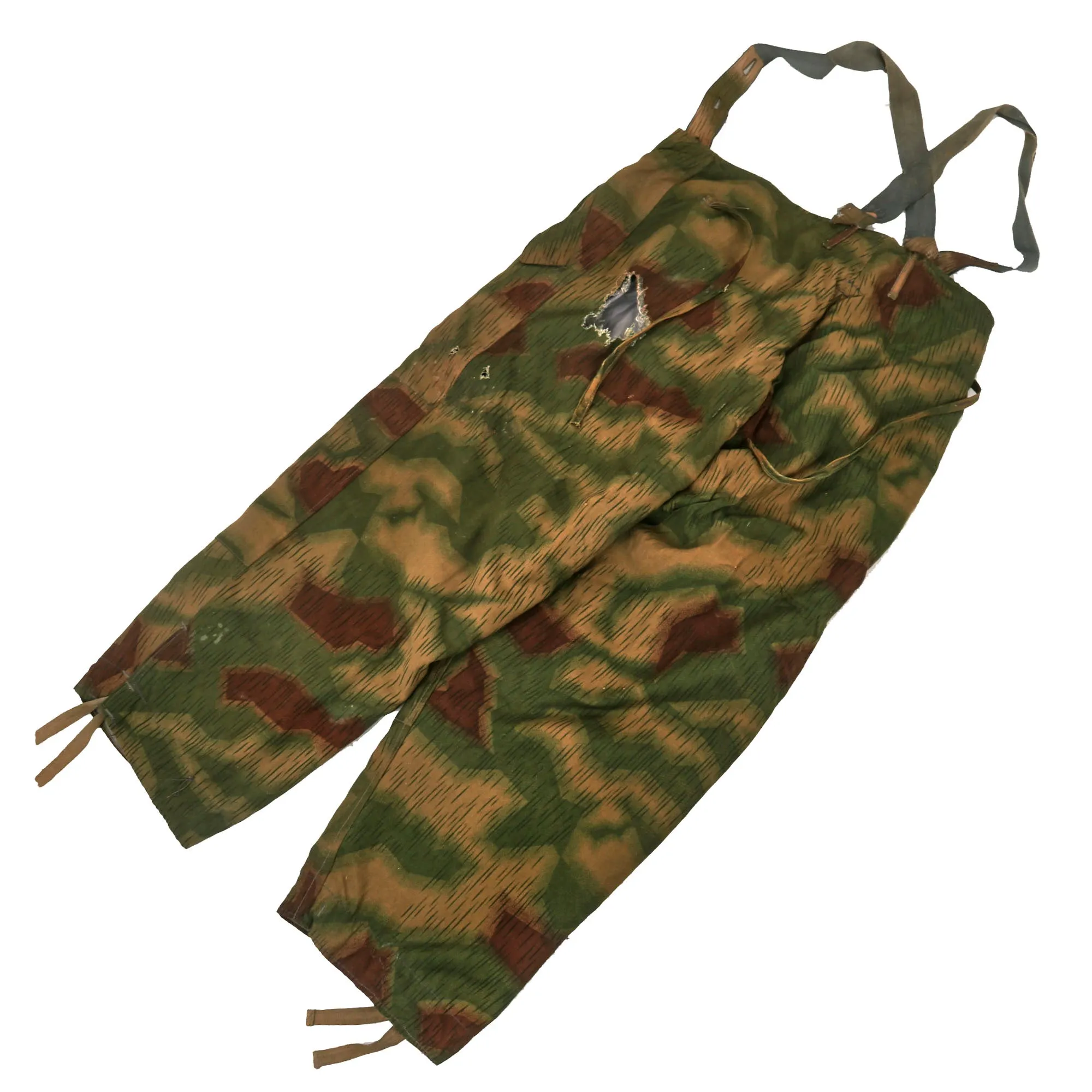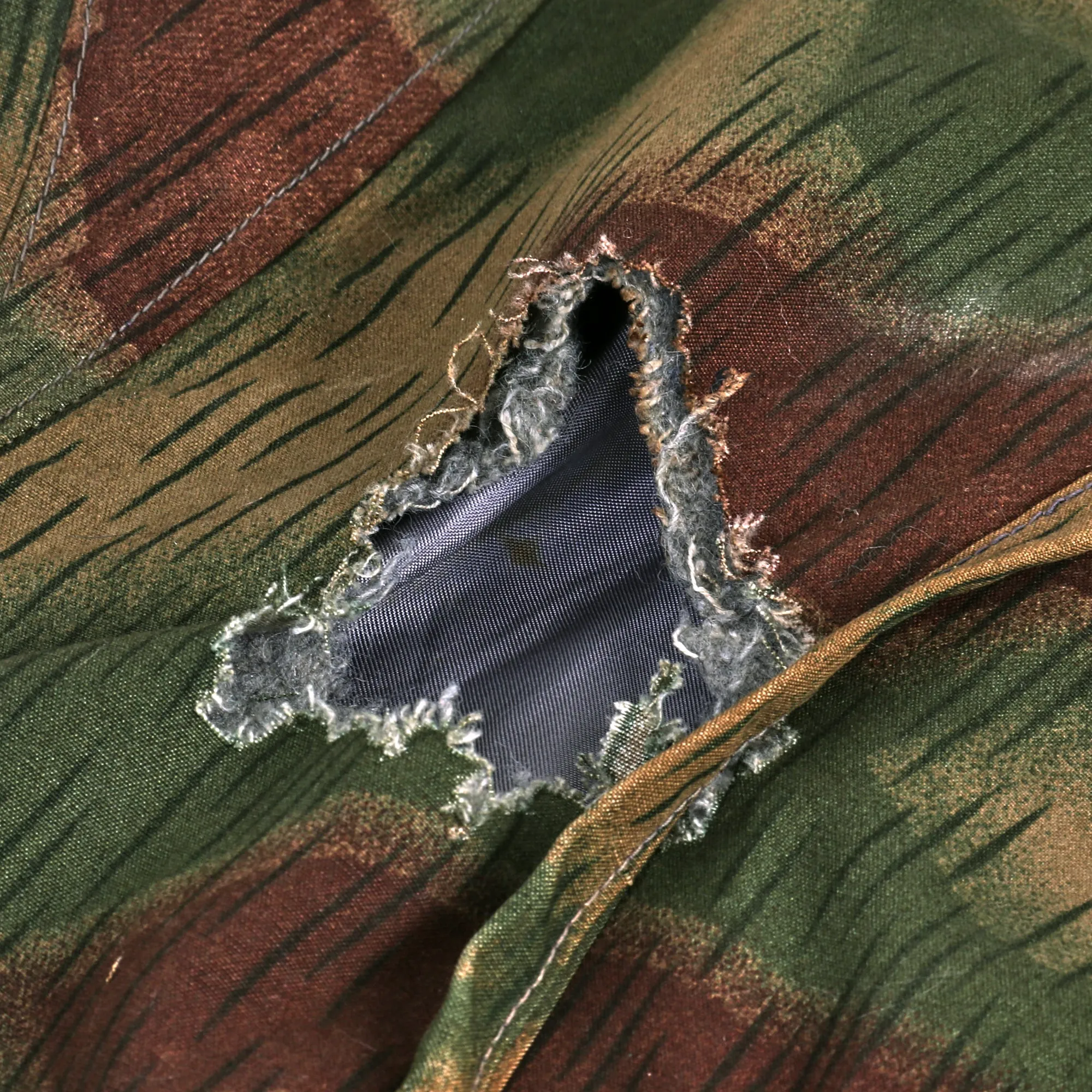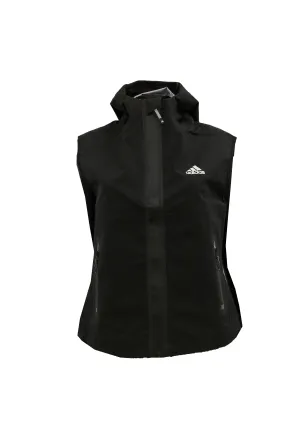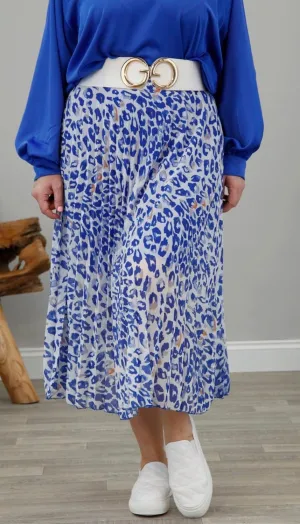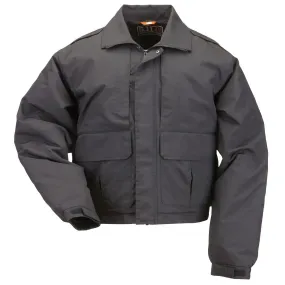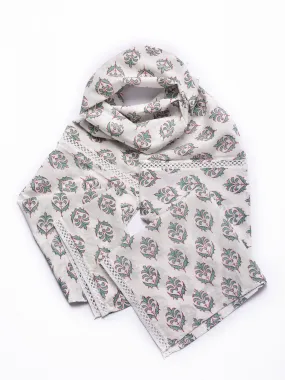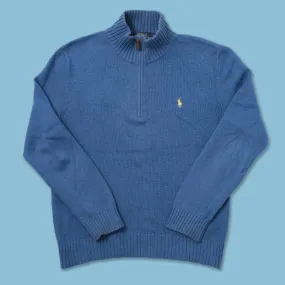Original Item: Only One Available: This is a great "salty" service worn condition Swamp Pattern Camouflage parka used by German soldiers during World War Two, complete with the very hard to find matching pants! This example definitely shows quite a bit of deterioration to the fabric, especially around the hood of the parka, which is literally falling apart. It shows similar deterioration on the left sleeve, and also shows various other types of damage from service and possibly storage. The Sumpftarnmuster (Swamp or Tan Water Camouflage Pattern) model parkas appeared in the winter of 1943 and were widely issued throughout the German Army and some specialty units.
Many parkas reverse from camouflage to white, however this example does not and has a blue gray rayon lining, which shows staining from age and use. The waist drawstring is still present and fully functional, however the hood drawstring is not really functional due to the condition of the hood. The bottom four of the size front closure buttons are still present, as are the two buttons at the end of each sleeve and the buttons for the waist pockets. They are all painted zinc and show much wear to the original painted finish, and also show some "white rust" oxidation.
The exterior camouflage side has definitely seen serious wear and exposure to the elements, and as previously mentioned the hood is literally falling apart. The exterior fabric on the left arm is also quite deteriorated, showing the internal insulation layer clearly in many areas. The camouflage fabric shows much staining in those areas, and is stiff and delicate. There is similar deterioration on the body of the parka under the left arm, so we can imagine that the soldier who whore this must have seen a lot of time out in the rain or other types of inclement weather. The large amount of staining on the interior lining also confirms this. There are no markings that we can see, but that is not unusual, even on examples in excellent condition.
The included pants are in good condition, and match the parka fairly well in color and style. They are lined with the same blue gray rayon, however the buttons are all black plastic or bakelite. All of the buttons look to be present, including those for the front main closure and the hip pockets. The pants come with their original blue gray web suspenders, which attach to wooden dowels on the pants, which are all still present. They even have sewn on camouflage on the ends so that if the ends are seen, it does not ruin the camouflage profile. The bottom of the pants have a drawstring closure. The pants definitely do show wear and some small tears as well as staining in many areas. There is some fraying / damage to the suspenders, and there is also a 3 inch wide hole on the rear left seat, which does through the camouflage and insulation, but not the lining.
A very rare and hard to find original World War II German winter parka and pants set, only the second set that we have had! This one definitely looks like it went through a war! Please note that it is definitely in delicate condition and is not suitable for wearing anymore. Comes more than ready for display.
Approximate Measurements:
Collar to shoulder: 11"
Shoulder to sleeve: 23”
Shoulder to shoulder: 19”
Chest width: 24"
Waist width: 24"
Hip width: 24"
Front length: 26.5"
Pants:
Waist: 19"
Inseam: 24"
German World War II camouflage patterns formed a family of disruptively patterned military camouflage designs for clothing, used and in the main designed during the Second World War. The first pattern, Splittertarnmuster ("splinter camouflage pattern"), was designed in 1931 and was initially intended for Zeltbahn shelter halves. The clothing patterns developed from it combined a pattern of interlocking irregular green, brown, and buff polygons with vertical "rain" streaks. Later patterns, all said to have been designed for the Waffen-SS by Johann Georg Otto Schick, evolved into more leaf-like forms with rounded dots or irregular shapes. Camouflage smocks were designed to be reversible, providing camouflage for two seasons, whether summer and autumn, or summer and winter (snow). Distribution was limited to the Waffen-SS, ostensibly because of a patent, though variants were used by other units, including the Luftwaffe. Production was limited by shortage of materials, especially of high quality waterproof cotton duck.
The Reichswehr (Army of the Weimar Republic) started experimenting with camouflage patterns for Wehrmacht uniforms before World War II and some army units used Splittertarnmuster ("splinter camouflage pattern"), first issued in 1931, and based on Zeltbahn shelter halves/groundsheets. Waffen-SS combat units used various patterns from 1935 onwards. The SS camouflage patterns were designed by Johann Georg Otto Schick, a Munich art professor and then the director of the German camouflage research unit,[a] at the request of an SS Major, Wim Brandt. Brandt was an engineer and the commander of the SS-VT reconnaissance battalion, and he was looking for better camouflage. Schick had researched the effect of light on trees in summer and in autumn. These led to the idea of reversible camouflage clothing, with green summer patterns on one side, brown autumn patterns on the other. In 1937, the patterns were field tested by the SS-VT Deutschland regiment, resulting in an estimate that they would cut casualties by fifteen percent. In 1938, a reversible spring/autumn helmet cover, smock, and sniper's face mask in Schick's forest patterns on waterproof cotton duck were patented for the Waffen-SS. The patent is said to have prevented the Wehrmacht from using the patterns, which became a distinctive emblem of the Waffen-SS during the war. However, patterned uniforms were worn by some other units, including from 1941 the Luftwaffe, which had its own version of Splittertarnmuster, as well as the Kriegsmarine (navy), the Fallschirmjäger (paratroops), and the Waffen-SS. The 1945 Leibermuster was planned to be issued to both the SS and the Wehrmacht, but it appeared too late to be widely distributed.
Production of groundsheets, helmet covers and smocks by the Warei, Forster and Joring companies began in November 1938. They were initially hand-printed, limiting deliveries by January 1939 to only 8,400 groundsheets and 6,800 helmet covers and a small number of smocks. By June 1940, machine printing had taken over, and 33,000 smocks were made for the Waffen-SS. Supplies of high quality cotton duck, however, remained critically short throughout the war, and essentially ran out in January 1943. It was replaced by non-waterproof cotton drill cloth.

